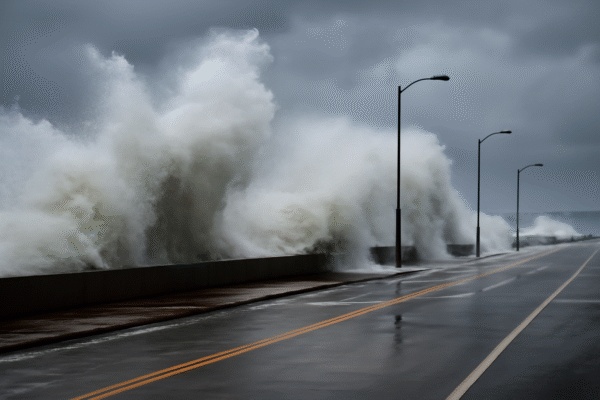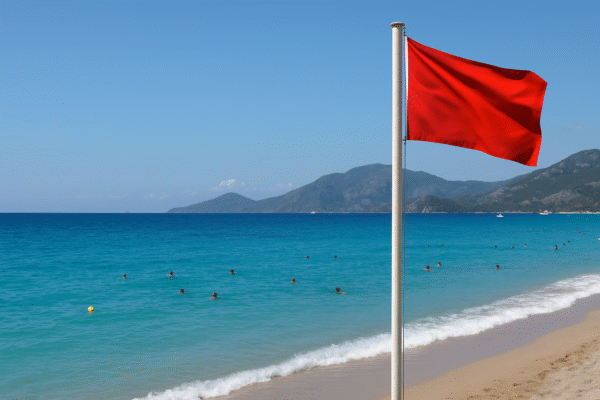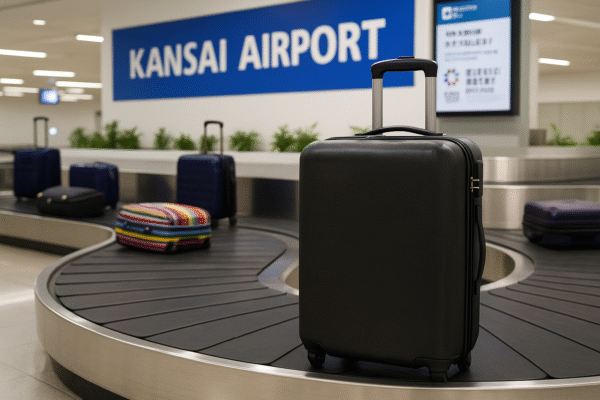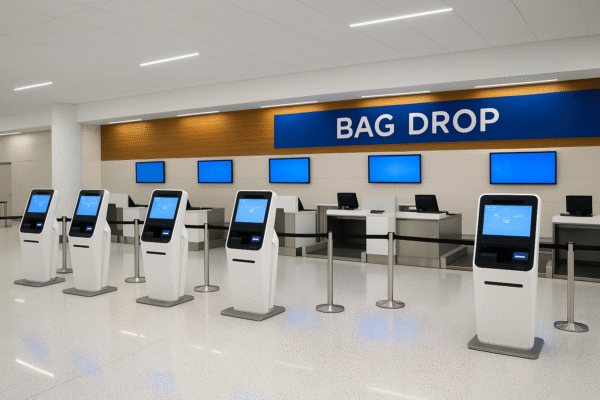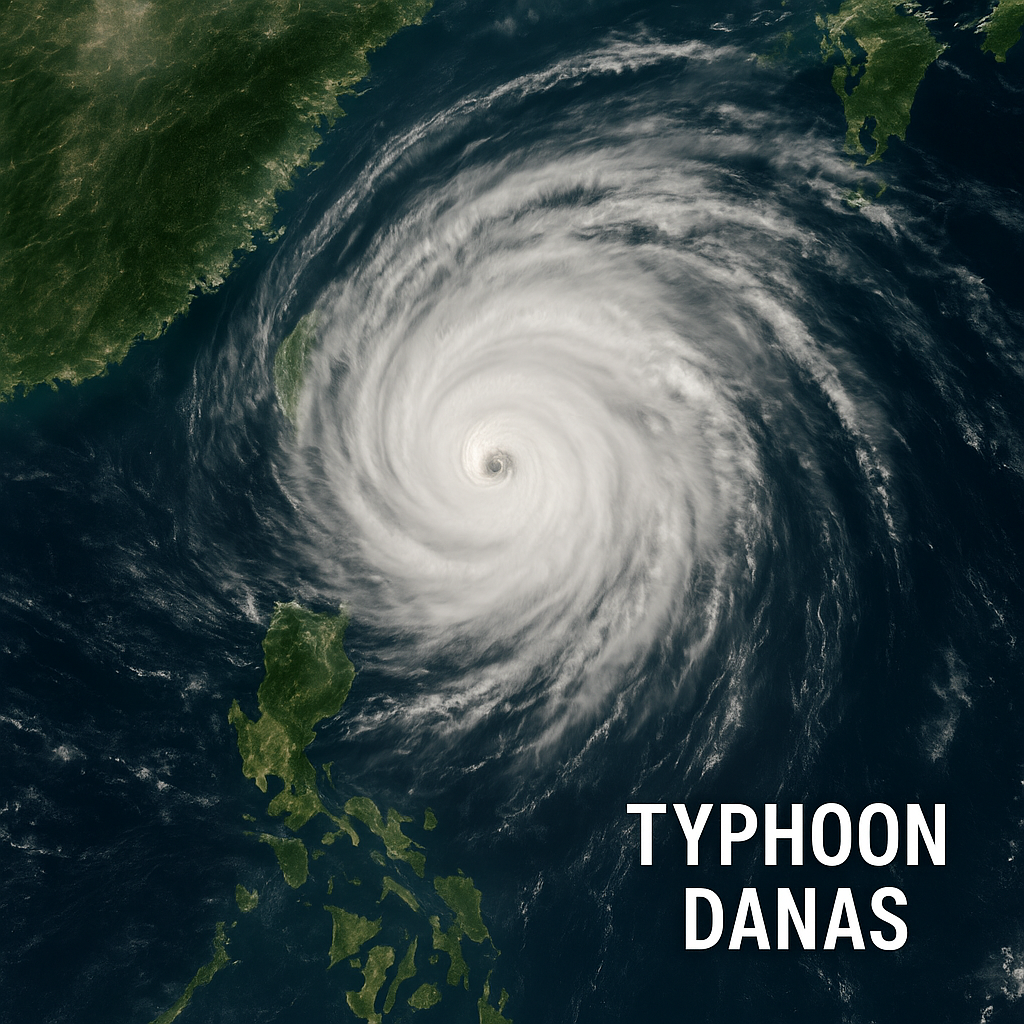TAIPEI, TAIWAN — July 7, 2025 — Taiwan’s tourism and transportation sectors were thrown into disarray this weekend as Typhoon Danas lashed the island with powerful winds and torrential rain, forcing widespread flight cancellations, ferry service suspensions, and railway closures. The storm, which tracked northward across Taiwan, has left over 8,000 tourists stranded, particularly in outlying islands such as Penghu and Kinmen, and caused widespread damage across major travel routes and tourist destinations.
As recovery efforts begin, Taiwan’s Central Weather Administration continues to issue weather alerts, while officials focus on evacuating stranded travelers and restoring essential services.
Major Flight Disruptions Across Taiwan
Air travel was among the first sectors hit by the storm. A total of 258 domestic flights were cancelled on Sunday, July 6, primarily those serving outlying islands such as Penghu, Kinmen, and Matsu.
Mandarin Airlines and UNI Air, two key domestic carriers, grounded all Sunday operations due to unsafe conditions. Limited services resumed Monday afternoon, but uncertainty remains as lingering storm impacts continue to affect airport schedules and visibility.
International Flight Cancellations (Kaohsiung Departures)
China Airlines canceled multiple international routes including:
- Kaohsiung–Tokyo Narita (CI126/CI127)
- Kaohsiung–Bangkok (CI839/CI840)
- Kaohsiung–Osaka (CI176/CI177)
- Kaohsiung–Okinawa (CI132/CI133)
- Kaohsiung–Shanghai Pudong (CI583/CI584)
- Kaohsiung–Hong Kong (CI935/CI936)
With many international passengers in transit or planning onward travel, the disruption caused significant confusion and delays for both incoming and outgoing travelers.
Ferry and Rail Shutdowns Leave Tourists Stranded
In addition to air travel, ferry services were brought to a halt across several key maritime routes. Ferries from Keelung to Matsu, Keelung to Kinmen, and Donggang to Xiaoliuqiu were suspended between Saturday evening and Monday morning due to rough seas and dangerous wind conditions.
- Keelung–Matsu: Cancelled from Saturday night to Monday
- Keelung–Kinmen: Suspended Saturday evening; resumed Monday
- Donggang–Xiaoliuqiu: Expected to resume by Wednesday
These cancellations particularly impacted Penghu, where over 8,000 tourists remain stranded. The government has announced that over 100 recovery flights will be deployed over the next few days, with military aircraft on standby if needed.
Meanwhile, Taiwan Railway Administration temporarily suspended the South Link Line, a key route connecting southern and eastern Taiwan. While services resumed Monday, other affected roads and landslide-prone areas remain under observation.
Road Closures and Travel Warnings
Several major roadways across Taiwan were impacted by landslides and flooding, with authorities issuing temporary closures on multiple highways:
- Central Cross-Island Highway: Closed due to landslides
- National Highway 3 (Formosa Freeway): A fatal crash reported during heavy rain
- Provincial Highways 9, 18, 20, and 29: Partial closures remain in place
Motorists are advised to check with the Highway Bureau for live updates and detour information before traveling across mountain passes or coastal highways.
Tourism Closures Across Key Destinations
Tourism has been severely impacted, with multiple national parks, forest areas, and heritage attractions closed due to storm damage or as a precautionary measure:
- Kenting National Park: Temporarily shut due to high wind alerts
- Alishan Forest Railway and Recreation Area: Closed to protect visitors from falling debris and landslides
- Fushan Botanical Garden, Shuangliu Recreation Area, and mountain parks including Hehuanshan, Dasyueshan, and Wuling were all ordered closed by the Forestry Bureau
These destinations are among Taiwan’s most visited natural and cultural sites. Their closure has brought tourism activity in central and southern Taiwan to a standstill, affecting both local businesses and travelers.
Government Response and Safety Measures
President Lai Ching-te visited the Central Emergency Operations Center on Sunday to oversee recovery operations. He stressed the importance of interagency coordination, especially between local governments and disaster response units.
The government has mobilized emergency services to prioritize stranded tourists, restore power and infrastructure, and monitor landslide-prone zones. Special care is being taken to ensure supply delivery to remote islands, where basic resources like water and food have grown scarce due to transportation blockages.
The Central Weather Administration (CWA) continues to monitor the typhoon’s retreating edge, with additional warnings issued for southern and central regions, where heavy rainfall and wind gusts remain ongoing.
Outlook for Tourists and Residents
Although Typhoon Danas has begun to weaken, its effects on Taiwan’s travel and tourism industry will likely last weeks. Recovery of transportation routes is underway, but authorities warn that sporadic cancellations, delays, and route adjustments should be expected.
Travelers currently in Taiwan or planning to arrive in the coming days should:
- Check airline and ferry schedules regularly
- Monitor updates from the Central Weather Administration and local authorities
- Postpone non-essential travel to affected areas
- Remain alert for flooding, road closures, or additional weather advisories
Conclusion: Resilience Amid Crisis
Typhoon Danas has exposed the vulnerabilities of Taiwan’s transportation infrastructure, particularly its island connectivity and mountainous regions. While the quick response from government agencies has minimized injuries and protected lives, the storm has significantly disrupted travel plans for thousands of tourists and locals alike.
As the island begins its recovery phase, cooperation between public agencies, tourism operators, and travelers will be essential. Patience, preparedness, and close attention to official guidance will be key as Taiwan’s tourism sector works to rebound from one of the most disruptive storms of the year.
For more travel news like this, keep reading Global Travel Wire





